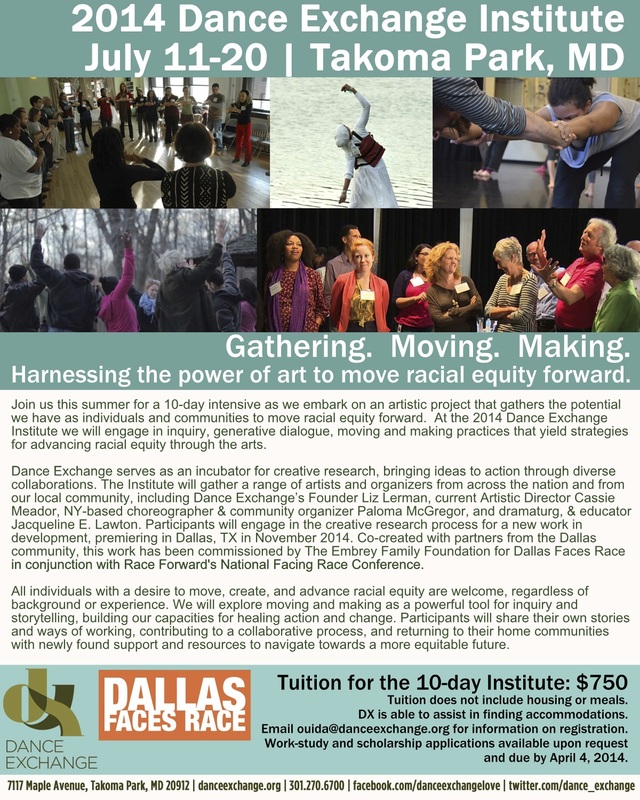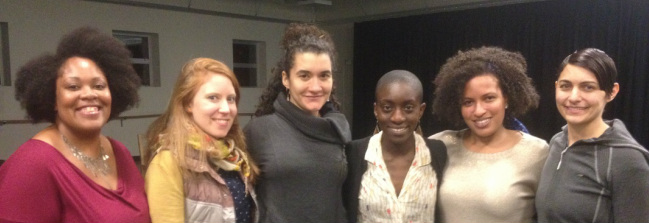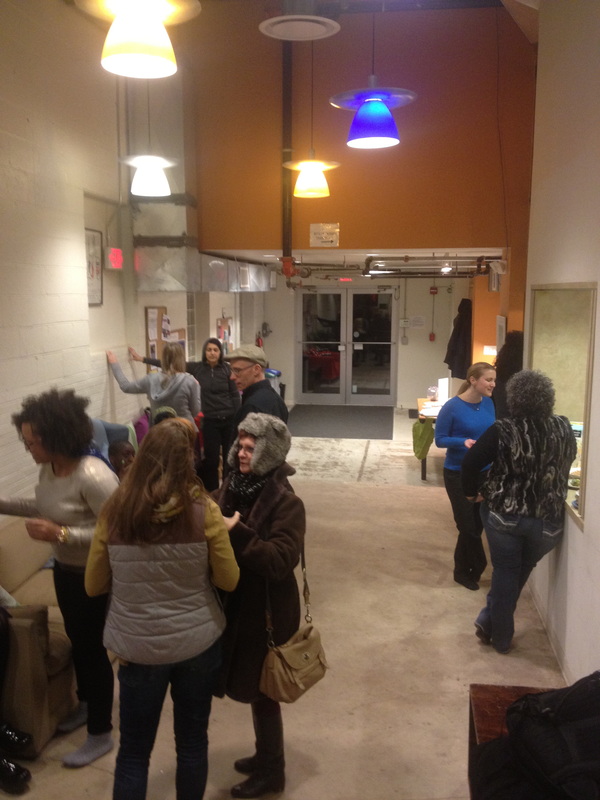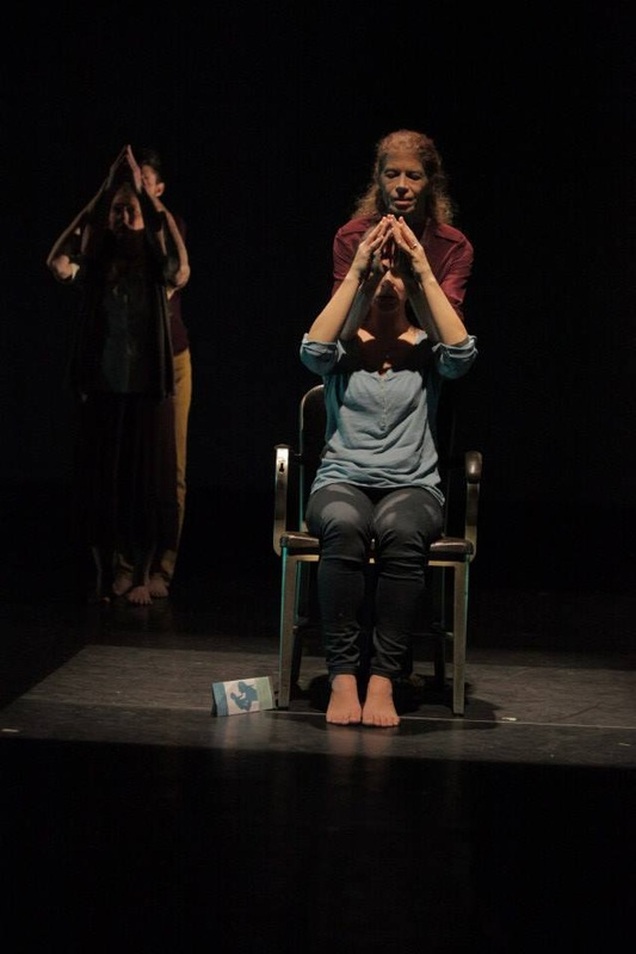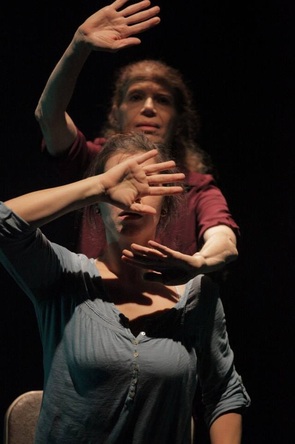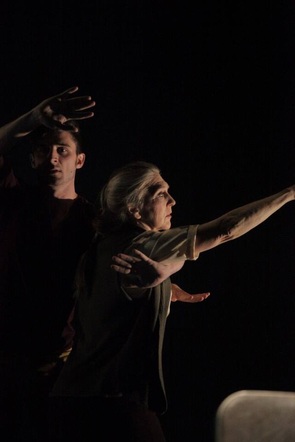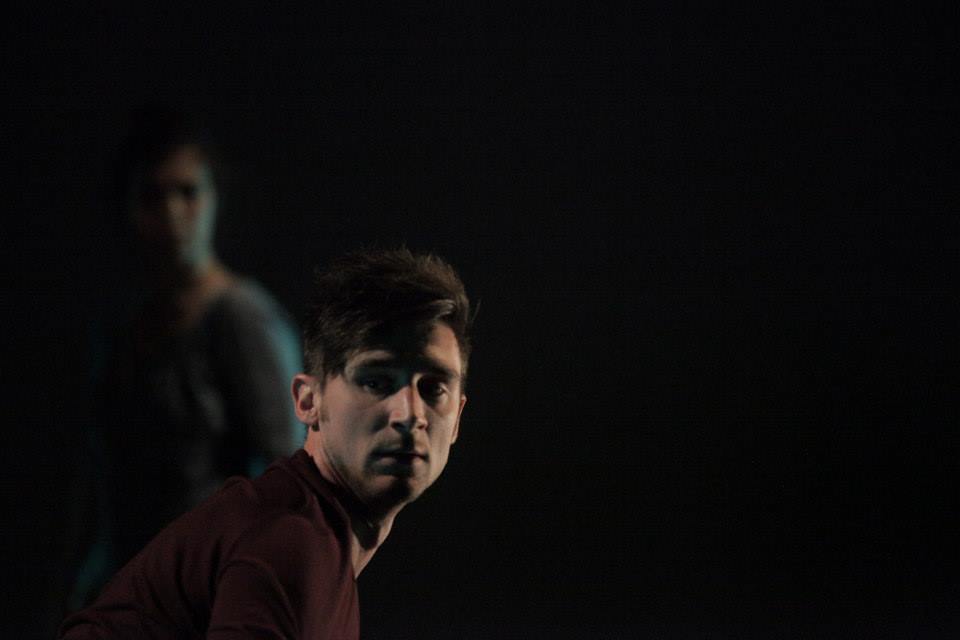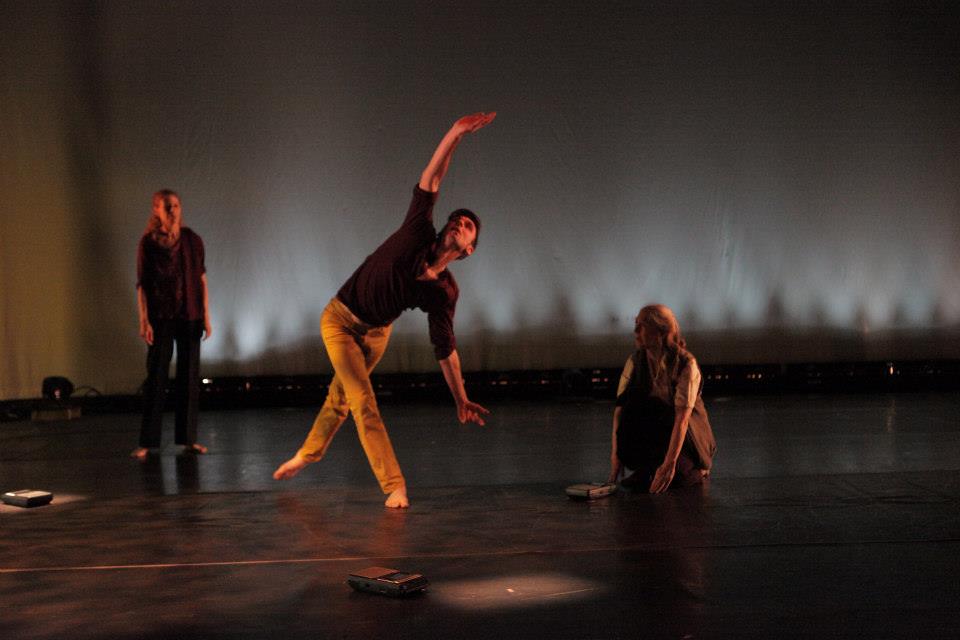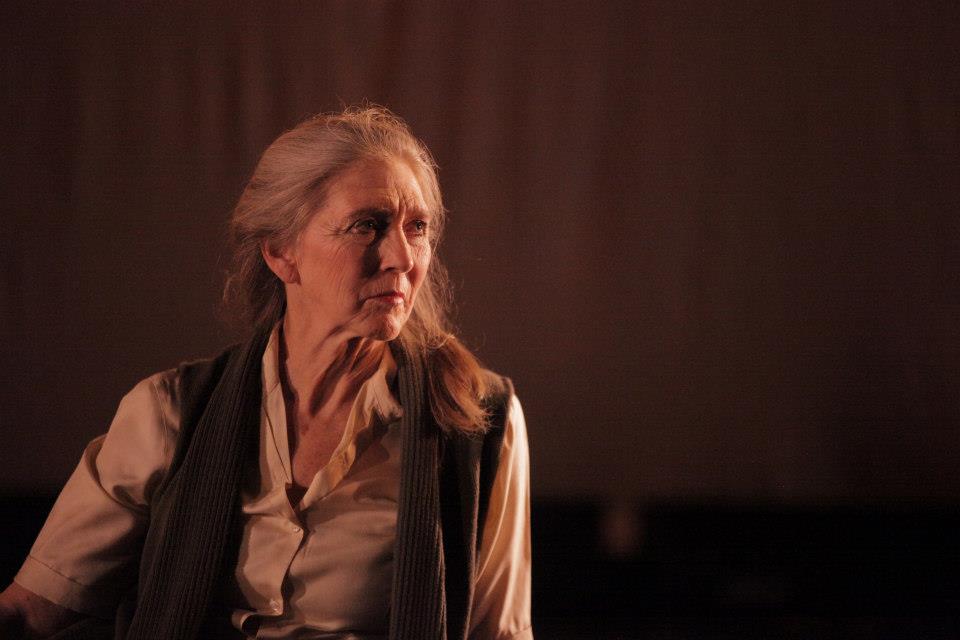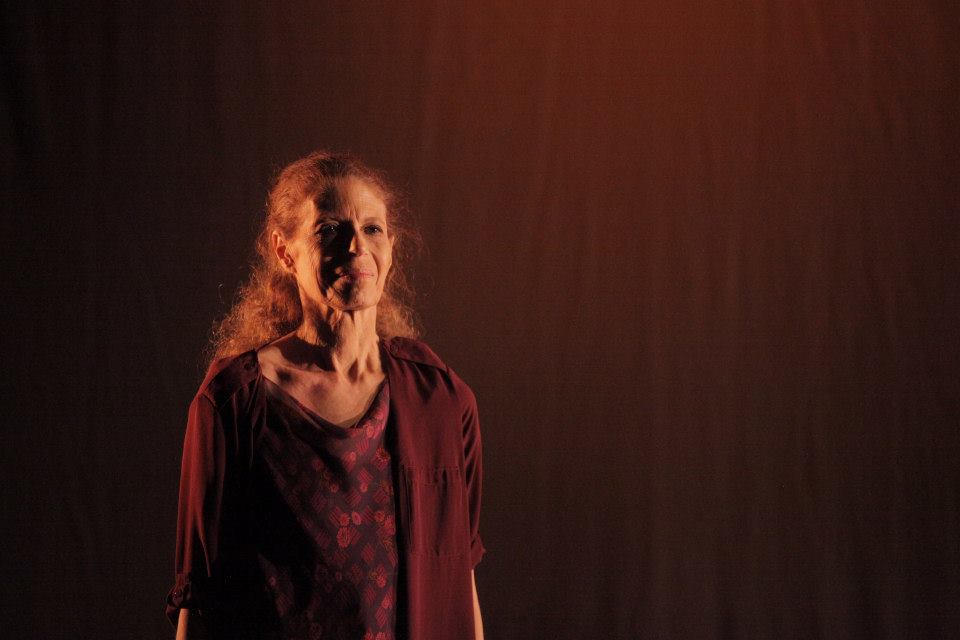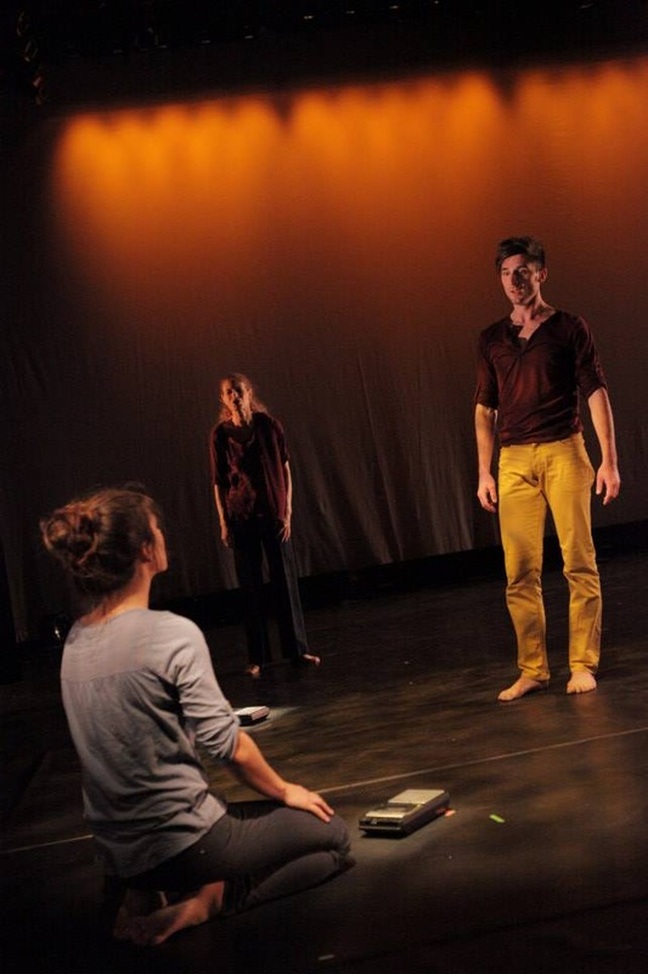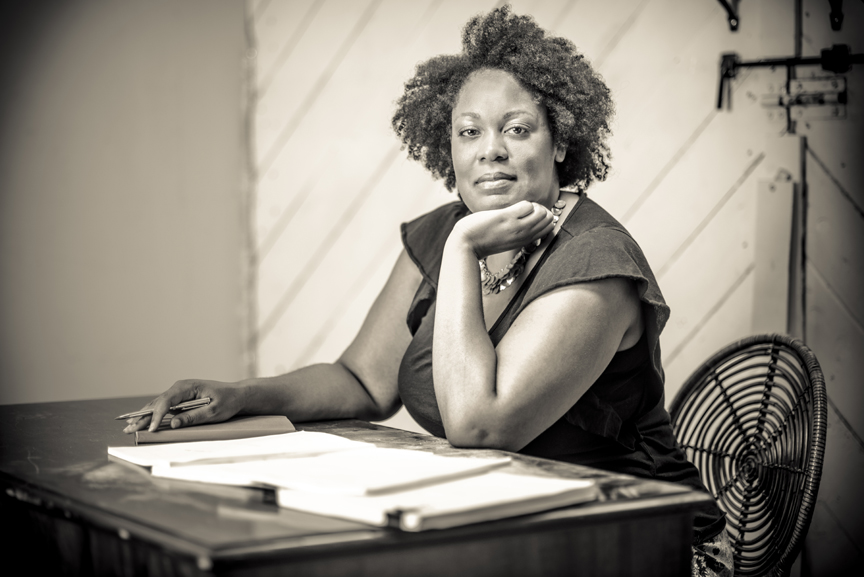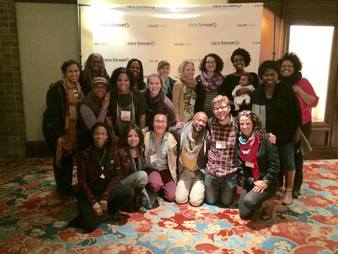 Our incredible team of Dance Exchange artists, collaborators, and partners. Our incredible team of Dance Exchange artists, collaborators, and partners. It’s important to note that the 2014 Facing Race conferences was the largest one by far and was the first one to be held in the South. Day Two offered just as many wonderful choices if not more! The opening plenary examined the powerful impact of southern organizing and the closing key note call to actions from three outstanding speakers. My break sessions explored racial equity in the education system and the representation of race in the media. What follows are my notes from each session: Roots and Wings: Southern Histories, Legacies and Innovations for the Future Description: When some outside the region think of the US South, often the imagination leads to images of slavery, struggle and protest that starts in the 1800s and stops in the 1960s. For the many of us- people of color, immigrants communities, LGBTQ people – who populate and call this region home, we experience and understand “the South” as not only the place where race, power, and revolution is best understood but also where history and legacies give way to 21st century innovation for our movements. Click here to learn more about the session and speakers. Having been raised in Texas and in the process of moving to North Carolina, I was particularly interested in this conversation. Here are my notes:
Transformative Approaches for Addressing Race, Healing and Taking Action for Equity in Schools Description: This interactive session will explore key racial equity concepts and strategies that support an educator’s ability to identify, interrupt and address inequity in their classrooms and schools. Educators will walk away with a deeper understanding and practical tools for engaging in sense-making conversations about racial equity that lead to productive action. Click here to learn more about the session and speakers. Goals for the Session:
Leading for Racial Equity Requires:
Listening: Your Best Leadership Tool Any kind of transformation begins with how you listen and what kind of discourse that you’re in. Constructivist Listening allows for such transformation. Guidelines
Talking about Race and Racism in schools provides students, educators, and families with an understanding, awareness, and vision of Racial Equity and Justice. We have to remember that school systems are based in hegemonic patriarchal structures. We have to ask ourselves:
We must remember that when racial inequity is present, we much change the discourse. We moved from (Discourse 1) dominant ways of seeing and engaging the work of education that maintain existing practices and serve to reproduce social inequity. From here, we move to (Discourse 2) new ways of seeing and engaging the work that challenge the status quo by naming uncomfortable realities and unequal conditions while pushing for the deep inquiry. We want to apply tools constructively listen to shift the discourse and create spaces for learning and change. Remember, it’s not enough to stop the bias. We must create a space for something different. This was by far, the most useful session of the entire conference. Olivia Pope Notwithstanding: Strategies to Transform a TV Landscape Causing Everyday Harm to Black People Description: Stereotypical images of Black people are not only insulting and inaccurate — they’re dangerous. Research shows that the limited stories we see shape cultural attitudes about Black people and drive the decisions of lawmakers, employers, teachers and police. Media literacy training has taught us all to understand the problem, but what are the strategies for creating real change? Click here to learn more about the session and speakers. While most directly related to the work I do as a playwright, this session left me and others quite frustrated. Unfortunately, we didn’t discuss action plans or next steps, but here are some poignant thoughts and reflections:
The Next Fifty Description: This year and next we will celebrate the anniversaries of major racial justice victories like the Civil Rights and Voting Rights Acts. In this plenary, big thinkers will reflect on trends and strategies for the next half century. Get your long term on with Ian Haney Lopez, Van Jones, and Rinku Sen. Click here to learn more about the session and the speakers. Ian Haney Lopez spoke to the 2042 demographic shift, the evolution of racism, and the boundaries of whiteness:
Van Jones challenged leaders of color to expand our presence and expertise in the four centers of power: Washington DC, Wall Street, Silicon Valley, and Hollywood.
Rinku Sen delivered another rousing address that marked the next 50 years of our work together and how we have to see ourselves as one constituency.
With that, this amazing conference came to an end. I left feeling exhausted, but armed with resources, methodologies, and passionate allies. I felt a shift occur in my thinking, in how I want to spend my time, effort, and energy. I’m not the same person from all that I’ve experienced over the past four days and I’m grateful for it. I’m excited to take this knowledge and new sense of self back my work in the American Theatre and to my new home in North Carolina.
0 Comments
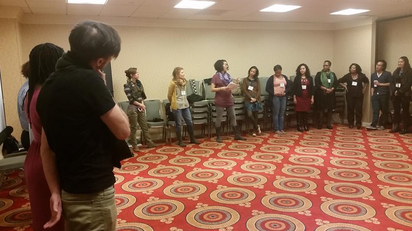 Cassie and Paloma facilitating at the 2014 Facing Race Conference. Photo by Jacqueline Lawton. Cassie and Paloma facilitating at the 2014 Facing Race Conference. Photo by Jacqueline Lawton. One of the most challenging aspects of the conference was deciding upon which breakout session to attend. There were so many wonderful choices! The opening plenary addressed work of youth activists and organizers and the evening key note offered a powerful intergenerational conversation around racial justice and equity. My break sessions offered a meditation on the intersection of race and ethnicity and the role of both the arts and government. What follows are my notes from each session: This is How We Do It: Youth Led Racial Justice Description: A new generation of racial justice leaders are interrupting and innovating in the ways racial justice work is made relevant in our times. In various ways, young people are working creatively, intersectionally and courageously to set our nation on course for the racially just future we deserve. Click here to learn more about the session and speakers. It was excellent way to begin the day by focusing on youth activist and organizers. Their ambition, focus, and ideals were insightful and inspiring. While they are seeking counsel and guidance from elders, they aren’t waiting for adults to step in and intervene on their behalf. Here are the greatest takeaways for me from this panel discussion:
Reclaiming Government: A Dialogue about the Intersection of Race, Ethnicity and the Public Sector’s Role in Advancing Equity Description: The challenges and opportunities of an increasingly diverse America demand that we rebuild broad public support for an active governmental role in creating opportunities and reducing inequities. The implicit and explicit racialization of policies, programs and public systems can not only exacerbate inequities but also influence the public’s perception of and relationship to government. Click here to learn more about the session and speakers. We began the conversation generating a list of questions that we wanted to address. Here are the ones that guided the conversation:
The discussion that followed was as rich and thoughtful. Here are some of the suggestions and observations that stayed with me:
From there, we began to address specific way to be in dialogue with members of the public sector. If someone opposes racial justice or reform police, then convincing them to support it requires several things:
Then, we discussed the careful negotiation of data. Of course, we need to gather data and research to prove our claims and support our initiatives. However, data can drive people away:
It is important to lead with values, contextualize the data with stories or narrative, and know your audience. Here is where stories are so beneficial:
For those working in the arts, I strongly encourage you to visit the Performing Arts Alliance and make use of theirAdvocacy Basics for Performing Arts Organizations. Creative Convening: Moving Racial Equity Forward Through the Arts Description: Dance Exchange breaks boundaries between stage and audience, and theater and community. For 38 years, we have been stretching the range of contemporary dance through bringing ideas into action. We are partnering with Dallas Faces Race to ask how communities can use creative strategies to advance racial equity, in Dallas and beyond. Click here to learn more about the session and speakers. During this session, participants engaged in personal storytelling and dance. They were asked to focus on their personal histories and to examine how these histories informed their decisions on an individual and structural level. While the work didn’t focus specifically on race, participants demonstrated the listening skills, collaboration, and intergenerational work required to undo racism and move towards a more equitable future. Working in pairs, participants were asked to reflect on and share verbal responses to the following prompts:
From there, participants worked in pairs to share stories and make creative responses (sounds, movements, and gestures) to the following prompts:
In closing, participants were asked to meditate on something they would carry forward from this experience and pass on in some way. While there wasn’t time to hear the verbal response, we were able to see pairs dance and it was beautiful work. This breakout session is part of a 2-year engagement that Dance Exchange has with Dallas-based partners. It’ll be exciting to see what develops and what materials are created to pass this work on to others. Keynote Address The keynote speakers for this year’s Facing Race National Conference were Dr. Bernice Johnson Reagon, Toshi Reagon, and Tashawn Reagon. It was a passionate and inspiring conversation that illustrated the significance of art, activism, and the intergenerational work around racial justice and equity. These thoughts and reflections resonated most with me:
We were encouraged us to dig deep and lean into discomfort. We were reminded to engage in work that brings about healing and meets each other with kindness. And however tired we might feel at any given moment on this journey, we who believe in freedom cannot rest until it comes. The room shook with the truth they were speaking. I went to sleep that day feeling a renewed sense of purpose and hope for the work ahead. 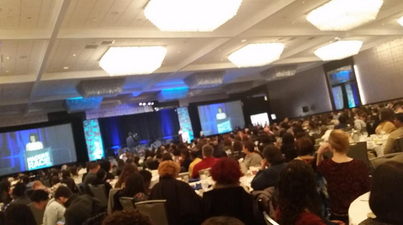 The 2014 Facing Race Opening Ceremony. The 2014 Facing Race Opening Ceremony. In 1964, President Lyndon B. Johnson put pen to paper and signed the Civil Rights Act into law. That same year, Dr. Martin Luther King Jr. was awarded the Nobel Peace Prize for his nonviolent resistance to racial prejudice in America and shared his vision for the future in his speech: “I believe that unarmed truth and unconditional love will have the final word in reality. This is why right temporarily defeated is stronger than evil triumphant. I believe that even amid today’s mortar bursts and whining bullets, there is still hope for a brighter tomorrow. I have the audacity to believe that peoples everywhere can have three meals a day for their bodies, education and culture for their minds, and dignity, equality and freedom for their spirits.” As we mark the 50 anniversary of this landmark legislation and reflect on the achievements and work ahead, it makes sense that more than 1500 activists, artists, scholars, historians, journalists, educators, politicians, and healthcare workers convened at Race Forward’s 2014 Facing Race national conference. On Thursday, conference participants had an opportunity to tour Dallas before registration began. Since I took part in the private tour with Dance Exchange, I spent the day planning my schedule, leaning more about the speakers, and pouring over the program. On page 7, they make a point of sharing a useful and thorough set of ground rules, which I thought would be useful to share here for others doing this work:
In terms of racial and gender identity, Race Forward has cultivated a set of respectful and inclusive linguistic habits and shared how they navigate specific situations:
While not everyone at the conference adopted these habits, space was created to discuss the need for racial awareness and cultural sensitivity. At 7:00pm, I headed to the opening ceremony. The 3-hour event opened with our conference weaver Soyinka Rahim who helped us ground our mind, body, and spirit in breath so that we could commit to the work more fully. Then, Rinku Sen (President and Executive Director or Race Forward and Publisher of Colorlines) and also Maria Yolisma Garcia (North Texas Dream Team) delivered a rousing welcome address. From there, we enjoyed a variety of performances: prayer song and drumming by the Bear Claw Drum Group and Darrell Blackbear; poetry and dance by Ashley Wilkerson and Michelle Gibson, an excerpt from a play, Santos: A Wandering Soul, present by Teatro Dallas; spoken word and live painting by Alejandro Perez, Will Richey, and David Rodriguez. The opening ceremony concluded with a special comedy performance by Hari Kondabolu. Dance Exchange was also a part of the opening ceremony with an interactive presentation called, Find the Burning Question. This performance brings together the powerful work from the summer institute. The questions that still resonate with me are:
During this performance, we were reminded that the intergenerational aspect of the work around racial justice and equity is essential and sometimes overlooked. Also, that this work is on a continuum. Wherever you are right now is a good place to start. Finally, we were asked to consider what sustains or inspires us to move forward to build work towards racial justice. The entire ceremony was uplifting, affirming and inspiring. I left feeling invigorated and eager to take part in the conference. 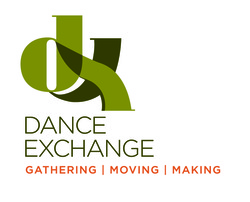 This past summer, I worked with Dance Exchange as part of their annual Summer Institute, which brought together artists, activists from all over the U.S. and Canada. During this 10-day intensive, we guided participants through inquiry, generative dialogue, moving and creative practices that yield strategies for advancing racial equity through the arts. On our first day, we worked with Race Forward Associate Trainers, Tammy Johnson and Nayantara Sen. Race Forward is a national racial justice organization that advances racial justice through research, media and practice. Founded in 1981, Race Forward brings systemic analysis and an innovative approach to complex race issues to help people take effective action toward racial equity. Race Forward publishes the daily news site Colorlines and presents Facing Race, the country’s largest multiracial conference on racial justice. Their interactive training exposed us language concepts and tools for racial justice and equity building. Using movement, hands-on exercise, discussion and application, participants so that we could build on our capacity to address structural racism and implicit bias in the arts. We began our day learning the Key Concepts: Key Concepts- Justice is not Diversity. Diversity is Variety. - Justice is not Equality. Equality is Sameness, and the truth of the matter is we are not the same. We come from radically different cultures, experiences, educational opportunities. - Justice is Equity. Equity means we are treated with fairness and justice. Now, my question is why do we have a wall at all, but this leads us to a conversation about liberation. Only, let's not get ahead of ourselves. We've got to prepare for the revolution first! From there, we defined Racial Justice and Systemic Equity:
This is critical because as we work to dismantle various systems, practices, and ideologies of oppression including, but not limited to racism and sexism, we have to replace them with systems, practices and ideology of Racial and Gender Equity. Individual-Level Racism
Systemic-level Racism
All of what was shared is part of a report, Moving the Race Conversation Forward, by Race Forward: The Center for Racial Justice Innovation that aims to reshape and reform the way we talk about race and racism in our country. The paper includes content analysis of mainstream media (finding two-thirds of race-focused media coverage fails to consider systemic racism), analysis of seven harmful racial discourse practices, and case studies of successful interventions to counteract these trends. This video, produced by Jay Smooth, expands on the report's analysis of media's failure to consider systemic racism. Smooth is the founder of New York's longest running hip-hop radio show, WBAI's Underground Railroad, and Race Forward Video & Multimedia Producer. Moving the Race Conversation ForwardOkay, now that you know how to talk about racism, here are three tips for addressing racism:
Strategies for Addressing Racism at Different Levels
From there, we watched this excellent presentation, Immaculate Perception by Jerry Kang, which helped up to see how explicit and implicit bias works in real life. Makers, Artmakers, Peacemakers: Immaculate perception? "Do you discriminate? UCLA law professor Jerry Kang exposes the phenomenon of automatic processing and how it relates to explicit and implicit bias. Decades of research shows that attitudes and stereotypes influence how we see and behave. Despite our best efforts, are we all under the sway of "the rightness of whiteness?" And is there evidence showing that these biases can be reduced -- at least temporarily? Using humor and audience participation, Kang challenges our assumptions while shifting our perceptions of at least one Asian male." Understanding Implicit Bias and How to Identify and Disrupt ItImplicit Biases are pervasive • People are often unaware of their implicit bias • Implicit biases predict behavior • People differ in levels of implicit bias Implicit Bias is Individual AND Institutional: • A lot of racial inequities occur without intention or malice. It does not require “racists. ” Implicit bias helps explain how racism can be subtle in appearance but significant in impact. • In institutions, the bias of individuals is routinely replicated through collective decisions and actions. It becomes compounded unless it’s consciously counteracted. • “Implicit Bias…offers the idea that discrimination and bias are social, rather than individual issues, and that we can thus all participate in promoting equality.” --American Values Project Implicit Bias and Public Policy • Most policies are facially neutral (race silent) but not racially neutral—they have negative or positive racial impacts. • Negative racial impacts may or may not have been intentional. Positive racial impacts often require intentionality. • When racial impacts are not consciously considered during the lawmaking/decision-making process, there is more likelihood that negative racial impacts will result-- implicit bias is the default. Choice Points • Choice points are decision-making opportunities that influence outcomes. • The cumulative impacts of many small choices can be as significant as the impacts of big decisions. • When we’re conscious of choice points and the related impacts, we’re less likely to replicate implicit bias and the status quo, and we open new possibilities for equitable change. Using Choice Points to Advance Equity
Racial Equity Impact Assessment OverviewWhat are Racial Equity Impact Assessments? A Racial Equity Impact Assessment (REIA) is a systematic examination of how different racial and ethnic groups will likely be affected by a proposed action or decision. REIAs are used to minimize unanticipated adverse consequences in a variety of contexts, including the analysis of proposed policies, institutional practices, programs, plans and budgetary decisions. The REIA can be a vital tool for preventing institutional racism and for identifying new options to remedy long-standing inequities. Why are they needed? REIAs are used to reduce, eliminate and prevent racial discrimination and inequities. The persistence of deep racial disparities and divisions across society is evidence of institutional racism––the routine, often invisible and unintentional, production of inequitable social opportunities and outcomes. When racial equity is not consciously addressed, racial inequality is often unconsciously replicated. When should it be conducted? REIAs are best conducted during the decision-making process, prior to enacting new proposals. They are used to inform decisions, much like environmental impact statements, fiscal impact reports and workplace risk assessments. Racial Equity Impact Assessment GuideBelow are sample questions to use to anticipate, assess and prevent potential adverse consequences of proposed actions on different racial groups. 1. Identifying Stakeholders Which racial/ethnic groups may be most affected by and concerned with the issues related to this proposal? 2. Engaging Stakeholders Have stakeholders from different racial/ethnic groups—especially those most adversely affected—been informed, meaningfully involved and authentically represented in the development of this proposal? Who’s missing and how can they be engaged? 3. Identifying and Documenting Racial Inequities Which racial/ethnic groups are currently most advantaged and most disadvantaged by the issues this proposal seeks to address? How are they affected differently? What quantitative and qualitative evidence of inequality exists? What evidence is missing or needed? 4. Examining the Causes What factors may be producing and perpetuating racial inequities associated with this issue? How did the inequities arise? Are they expanding or narrowing? Does the proposal address root causes? If not, how could it? 5. Clarifying the Purpose What does the proposal seek to accomplish? Will it reduce disparities or discrimination 6. Considering Adverse Impacts What adverse impacts or unintended consequences could result from this policy? Which racial/ethnic groups could be negatively affected? How could adverse impacts be prevented or minimized? 7. Advancing Equitable Impacts What positive impacts on equality and inclusion, if any, could result from this proposal? Which racial/ethnic groups could benefit? Are there further ways to maximize equitable opportunities and impacts? 8. Examining Alternatives or Improvements Are there better ways to reduce racial disparities and advance racial equity? What provisions could be changed or added to ensure positive impacts on racial equity and inclusion? 9. Ensuring Viability and Sustainability Is the proposal realistic, adequately funded, with mechanisms to ensure successful implementation and enforcement. Are there provisions to ensure ongoing data collection, public reporting, stakeholder participation and public accountability? 10. Identifying Success Indicators What are the success indicators and progress benchmarks? How will impacts be documented and evaluated? How will the level, diversity and quality of ongoing stakeholder engagement be assessed? This session was a comprehensive introduction to the Race Forward national conference, which I was fortunate enough to attend and also blog about to capture my experience. My next several post will give you a bit of insight into what I learned there.
 On Sunday, July 13 from 3pm to 5pm, following the 2pm matinee performance of Rodney King, Woolly Mammoth Theatre Company's Connectivity Department, in partnership with Dance Exchange (Washington, DC), will present "Stepping Toward Racial Equity": A House Lights Up Workshop Co-Presented with Dance Exchange. I'll be joining members of the internationally acclaimed Washington, DC-based company Dance Exchange to co-facilitate Stepping toward Racial Equity, an engaging, thought-provoking, and participatory movement workshop aimed at exploring the powerful ways in which personal storytelling can serve as a tool for advancing racial equity in our communities. Immediately following the performance of Rodney King, participants will work together to create a new dance piece by using accessible art-making tools rooted in inquiry, generative dialogue, and movement. There will also be opportunities to collaborate with Dance Exchange on material that is currently being developed for Dallas Faces Race and Race Forward’s Facing Race Conference which will take place in Dallas, TX in November 2014. All audience members with a desire to move, create, and advance racial equity are welcome, regardless of background or experience. Those who purchase tickets to the Sunday, July 13 matinee performance of Rodney King will also have the option to participate in the workshop for an additional $5. Click here to purchase tickets to the Sunday, July 13 2pm performance of Rodney King. Click here to purchase tickets to the Stepping Toward Racial Equity workshop. 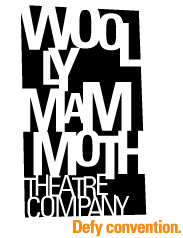 About the Play Woolly is thrilled to reunite with OBIE Award winning artist Roger Guenveur Smith after presenting his critically acclaimed A Huey P. Newton Story in 1996. In Rodney King, Smith explores the legacy of another American icon, colliding history and improvised poetry to unravel the myth of “the first reality TV star.” From the initial glare of the national spotlight as the victim of police brutality, to the heroism thrust upon him that ignited the LA riots, to his lonely death at the bottom a swimming pool, Smith captures the story of a flawed, good-hearted everyman, and by extension reveals America’s endlessly complicated relationship with its racial past and present. All tickets for Rodney King are $35 and can be purchased here. "The importance of Roger's new piece about Rodney King is almost shocking in relation to the Trayvon Martin verdict and other recent cases that have continued to make black men and boys feel uniquely vulnerable in our society," says Woolly Artistic Director Howard Shalwitz. "Roger's performance this summer will extend an important conversation about race that has flowed through our current season (including Appropriate, We Are Proud to Present..., From Emmett Till to Trayvon Martin: A Town Hall on Black Bodies and American Racism, and Facing our Truth: Ten Minute Plays on Trayvon, Race, and Privilege). His complex perspective on Rodney King's life explores a range of emotional responses and restores simple human dignity to a man who accidentally became a national symbol of racial persecution." Harnessing the power of art to move racial equity forward, please join Dance Exchange for a 10-day Summer Institute intensive. Together, we will engage in inquiry, generative dialogue, moving and making practices that yield strategies for advancing racial equity through the arts. See the flyer below and click here for more information.
 On January 16th, Dance Exchange presented “Dance Matters: A Discussion on Racial Equity and the Power of the Arts.” The facilitators were Dance Exchange's Artistic Director Cassie Meador, Partnerships and Production Manager Ouida Maedel along with University of Maryland PhD candidate Bimbola Akinbola and the panelists included featured artists Paloma McGregor, Jesse Phillips-Fein and myself. This interactive panel discussion invited participants to move, dialogue and reflect on the complexities of race and the possibilities of leveraging the arts for social change. This event is also part of Dance Exchange performance and community engagement work-in-progress, commissioned by The Embrey Family Foundation for Dallas Faces Race, in conjunction with Race Forward’s Facing Race Conference in Dallas Texas, in November 2014. 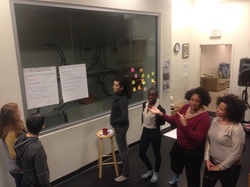 Since many of the participants were new to Dance Exchange and each other, we wanted to establish trust and create a safe space for this conversation. Additionally, we understoond that issues of race can be traumatizing for many people. Of course, this discussed at some length at the recent Playing with the Past, (W)Righting the Future panel at Georgetown University. Prior to the panel, we agreed to a list of rules:
With everyone in the room, we added:
After which, we shared what we were hoping to bring to the conversation and spent time getting to know as many people as possible one on one through a series of questions. Of course, we also moved. Cassie led us through warm-up and cool down exercises to help us address any areas on our bodies that might be holding onto tension, trauma, and unspoken pain. The panel discussion happened between the warm-up and cool down. Bimbola asked Paloma, Jesse and myself several thought-provoking questions. The following three still resonated with me:
After the discussion and final exercise, we enjoyed a lovely wine, cheese and dessert reception. During the reception and even out in the parking lot, many of us continued sharing thoughts about how artists can use their practice to address racism and achieve racial equity. I went home that night and wrote this into my journal: Tonight panel reminded of my work with Theatre Communication Group's Diversity and Inclusion We cannot accomplish the much-needed and complex work around anti-racism in isolation. I felt honored to be a part of this work with Dance Exchange. I hope to continue this collaboration. We must continue create spaces that address our concerns, invite curiosity and dialogue, heal our wounds, and move the conversation forward. Over the past six weeks, I've been in multiple conversations with theatre artists, who are tired of fighting for a change they just don't see coming. We must find ways to support each other in times of fatigue. A few days ago, I connected with the artists and facilitators to see how they were doing and where the panel left them. I wanted to hear what thoughts and questions they were still considering. They were kind enough to share their thoughts with me and I've included them for you here: 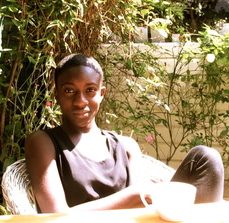 From Bimbola Akinbola: What has remained with me is the thought that we need to think deeply as a community about what we create from places of anger, pain, sadness or anxiety, and how our art can honor these emotions rather than brush them under the rug. 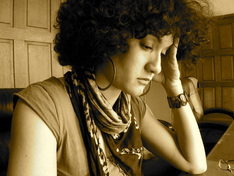 From Paloma McGregor: I'm still thinking about how we come together across racial lines and within them with a collective desire to understand and combat the systems that privilege white people every day in ways that can be hard for them to face or even recognize. I'm still thinking about how these systems have conditioned and dehumanized all of us. I hope we can continue to create and perpetuate practices and spaces that help us to stay grounded in our struggle while also unearthing and centering our hopes and visions, so that we are moving toward a more equitable future. I believe art making practice, in coalition with front-line organizing, can help us to keep our spirits and bodies moving toward equity.  From Cassie Meador: I am still questioning once people know they have privilege, what do they do from there? How do you acknowledge and make use of your privilege to enter into the work of advancing racial equity? I am still thinking about how we can’t afford to excuse ourselves from the conversation because it is challenging. We can’t afford to back away because of worry about what we have not recognized or questioned more deeply before this moment. We must be willing to confront the barriers personal and systemic that have prevented us from seeing and taking action. As hard as it may seem, each of us can only step into the conversation and begin from where we are now. From this place we must then enter into the stream of work and healing that is being done to build effective coalitions and move racial equity forward. It is comforting to know you don't have to stay where you are, you have a distance to travel, and new ways of seeing and understanding to move towards. I am still thinking about how we look beyond the surface to really consider the minute workings of systemic oppression. I am still thinking about all of the dismantling, uncovering, and unmaking that is necessary to move the barriers that prevent us from recognizing institutionalized inequities. I am struck by the creative potential surfaced when we engage in this process of unmaking and dismantling, and I am deeply interested in the ways I see artists leveraging creative strategies to advance racial equity. I move forward with gratitude to the panelists who offered us opportunities to acknowledge our personal journeys, while also being instrumental in putting dimensions of privilege into the discussion. I move forward from our conversation with a strong desire to examine and confront further the ways that privilege influence my own work culture, both organizationally and within the larger arts and culture sector. 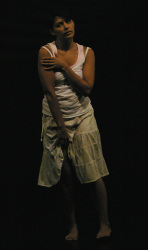 From Jesse Phillips-Fein: "What resonates with me is a need to connect our personal stories to our collective histories. What resonates with me is a desire to continue to raise up conversation and action on what makes cross-racial collaboration healing, powerful, and transformative, instead of a form that continues cycles of oppression masked by the facade of multiculturalism and "inclusion." Why were there so many white people in the room? What dynamic does that form and how we can we aware of and responsive to that?" 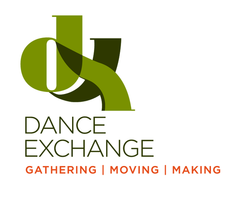 Dance Exchange breaks boundaries between stage and audience, theater and community, movement and language, tradition and the unexplored. Founded in 1976 by Liz Lerman and now under the artistic direction of Cassie Meador, Dance Exchange stretches the range of contemporary dance through explosive dancing, personal stories, humor, and a company of performers whose ages span six decades. The work consists of concerts, interactive performances, community residencies, and professional training in community-based dance. Dance Exchange employs a collaborative approach to dance making and administration. Recent and current projects include explorations of coal mining, genetic research, human rights, particle physics, ecology, land use, and rest in a hyper-driven society. For more information, visit danceexchange.org. 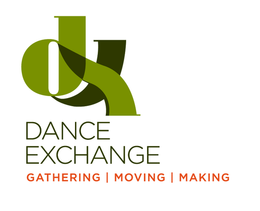 A few weeks ago, Dance Exchange presented FROM THE DESK OF RACHEL CARSON as part of Dance Place's Modern Modern Moves Festival at the Atlas Performing Arts Center. We showcased a 15-minute excerpt of a devised dance piece inspired by the life, career and legacy of environmentalist Rachel Carson. The performance was soldout, which is always exciting, and we received such a passionate and appreciative response. Right now, we're figuring out next steps to grow the piece and I'm just so thrilled to be moving forward with this work. FROM THE DESK OF RACHEL CARSON is inspired by the impact of Rachel Carson's novel, Silent Spring. Published in 1962, Carson exposed the brilliant and life-saving, but also negative impact of the pesticides on nature and challenged the many ways in which technological advances impede the health of humans and wildlife. All in all, she helped launch the environmental movement. Already a renowned nature author, Carson had also worked as a marine biologist with the U.S. Fish and Wildlife Service. She grew up with an enthusiasm for nature, which she held her entire life and captured in her later novel, Sense of Wonder. Click here to learn more about Rachel Carson. You can read more about our work and process here and here. Also, please enjoy these wonderful and captivating photos from our performance! 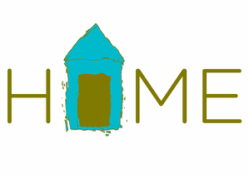 On Thursday, January 16th from 7:00pm to 9:00pm, Dance Exchange presents “Dance Matters: A Discussion on Racial Equity and the Power of the Arts.” This event will encompass a panel, dialogue and reflection, and process sharing that activates the possibilities of leveraging the arts for social change. Featured artists include Jacqueline E. Lawton, Paloma McGregor, and Jesse Phillips-Fein. "To maintain my energy and commitment to anti-racist organizing as a pillar of my artistic practice, said Paloma McGregor, multidisciplinary artists and longtime Dance Exchange collaborator. "It's important that I work in solidarity with diverse allies who share a similar analysis of the current power structure and a desire for equity. When we come together to do the work, we hold one another accountable and we hold one another up. I'm looking forward to expanding my community and deepening my understanding at Dance Exchange's Home event." "It is important to me to participate in this event because, as a white person, I benefit from a system of racial inequality that is (literally) killing people of color on a daily basis," said Jesse Phillips-Fein, freelance dancer and choreographer. "The arts are a powerful vehicle for addressing the ways in which I am made complicit in this violence, and a tool through which I can become a collaborator in solution and healing." "As an intersectional feminist, theatre artist, and advocate for social justice, I strongly believe that we must come together in this work around anti-racism," said playwright and dramaturg Jacqueline E. Lawton, recent collaborator with Dance Exchange on From the Desk of Rachel Carson. "In doing so, we must remember that addressing issues of racism can be traumatizing. We must come to this work with a spirit of curiosity and generosity. While we must be patient with one another, we must also be vigilant in our efforts and work in collaboration. This work should not be done in isolation. I'm honored to join Dance Exchange in these efforts." Through looking at the role of historical and personal milestones in relationship to experiences, process, and outcomes in the struggle for racial equity, Dance Exchange Artistic Director Cassie Meador, Partnerships and Production Manager Ouida Maedel, University of Maryland PhD candidate Bimbola Akinbola, and featured artists will bring participants into dialogue and creative research to explore the various roles for the arts, humanities, and other disciplines and institutions in advancing racial justice in the United States. “As artists, we have a perennial responsibility to excavate and shed light on the pressing issues of our time, to confront specific realities and universal truths, and to model civic leadership, empathy, and innovation for others," said Ouida Maedel. "Race is one of the few social constructions that is so pervasive and so deeply ingrained in daily life that it has the power to dictate and manipulate every kind of situation, especially when nobody is looking. It is only through turning and returning our attention to the asymmetries of power so fundamental to our society that we can foster our abilities to recognize their complexity and transform them.” Featured Artists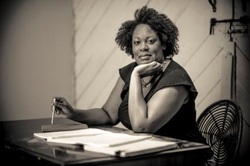 JACQUELINE E. LAWTON was named one of 30 of the nation's leading black playwrights by Arena Stage’s American Voices New Play Institute. Her plays include: Anna K; Blood-bound and Tongue-tied; Deep Belly Beautiful;The Devil’s Sweet Water; The Hampton Years; Ira Aldridge: the African Roscius; Lions of Industry, Mothers of Invention; Love Brothers Serenade (2013 semi-finalist for the Eugene O’Neill Theater Center’s National Playwrights Conference), Mad Breed, and Our Man Beverly Snow. Ms. Lawton received her MFA in Playwriting from the University of Texas at Austin, where she was a James A. Michener Fellow. She participated in the Kennedy Center’s Playwrights’ Intensive (2002) and World Interplay (2003). She is a 2012 TCG Young Leaders of Color award recipient and a National New Play Network (NNPN) Playwright Alumna. She has been recognized as a semi-finalist for the Eugene O’Neill Theater Center’s National Playwrights Conference and the Playwright's Center PlayLabs, and as a SheWrites Festival finalist. A member of Arena Stage's Playwright's Arena and the Dramatist Guild of America, Ms. Lawton currently resides in Washington, D.C. Jacqueline is currently collaborating with Dance Exchange on The Desk of Rachel Carson, a new devised work that explores the life, legacy and career of pioneering writer/ecologist Rachel Carson (1907-1964). 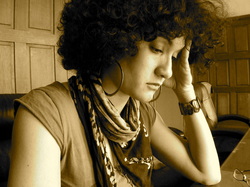 As co-founder of Angela's Pulse, along with her sister, theatre director Patricia McGregor, PALOMA MCGREGOR devises collaborative performance work; collaborates with diverse communities, including artists, activists, educators, students, seniors and scientists; and is dedicated to building community and illuminating undertold stories. Last summer, Angela’s Pulse worked on the creation of a new musical based on the landmark Supreme Court case Loving v. Virginia at Williamstown Theater Festival. Paloma is currently developing Building a Better Fishtrap, a multidisciplinary performance project that explores water, memory and home, as well as examines what we carry with us, leave behind and reclaim. The developing work has been presented by Earthdance, No Longer Empty and Danspace Project, and will premiere in 2014. Paloma is also curating work through her initiative, Dancing While Black, which aims to support and illuminate the breadth of work by black dance artists. Paloma has toured internationally with Urban Bush Women, and has been a long-time Dance Exchange collaborator, most recently appearing in Cassie Meador’s award-winning How To Lose a Mountain. Awards include a 2012-13 arts leadership fellowship from the Kennedy Center’s DeVos Institute, and grants and residencies from iLAND, the Harlem Stage Fund for New Work, and Voice & Vision. 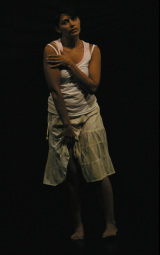 As a dancer, choreographer, teacher, and producer, Jesse Phillips-Fein's work dissects how large forces affect the fabric of the individual life – exploring the manners in which personal and political meet. She brings attention to how power is created, maintained, and justified through examining its manifestations in, on, and through the body. Jesse’s work “PALE” seeks to define the omnipresent but un-interrogated mentality and experience of being white, confronting the underbelly of that racial experience. Another recent work, “Color Blind Theories,” challenges the belief that being color blind erases racism. Based in Brooklyn, NY, Jesse’s choreographic work has been produced at Brooklyn Arts Exchange/BAX, Dance New Amsterdam, Danspace Project, The Flea, Dixon Place, HERE Arts Center, and Theater for the New City, among others. Meet the Facilitators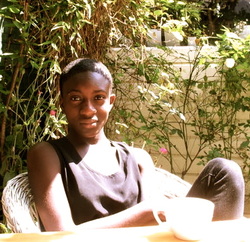 Bimbola Akinbola is a doctoral student in the Department of American Studies at the University of Maryland. Originally from Columbia, Missouri, she received her B.A from Macalester College in St. Paul, Minnesota where she double majored in American Studies and Studio Art, and conducted research in art history as a Mellon Mays Undergraduate Fellow. Her current research examines the role that visual and performance art plays in collective memory production within immigrant communities, as well as the archival function of museums and how communities engage with public history. 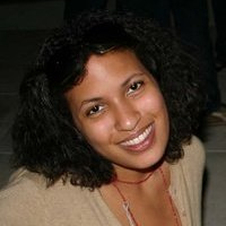 Since 2011, Ouida Maedel has worked as the Partnerships and Production Manager at Dance Exchange, where her first major project was to produce Cassie Meador’s 500-mile walk and community engagement tour to a coal mine in West Virginia during How To Lose a Mountain‘s development phase. Passionate about the use of the performing arts for social change, Ouida has performed with a traveling theatre troupe in Zambia, and has worked in conflict transformation and public health in Ghana and in the U.S., activating theatre and creative movement for education and civil society engagement. Ouida has performed in, or stage managed a multitude of productions in DC and in New York, she holds a BA from Sarah Lawrence College, an MA in International Communication and Arts Management from American University, where she was a teaching and research fellow, and she currently serves as a Helen Hayes Award Judge. 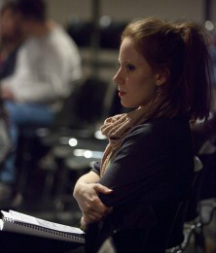 Cassie Meador is a choreographer, performer, educator and Artistic Director of the Dance Exchange. Her work is imbued with a passion for her surroundings, a belief in the human capacity for change, and a conviction that art can be a potent form of research and communication. In recent years, Cassie’s choreographic investigations have tackled numerous social and environmental issues through the synthesis of movement, sound, and striking visual images. She was recently selected as the sole artist representative to a research initiative of the International Human Dimensions Program on Global Environmental Change. She is an Associate Artist of the Center for Creative Research, and her writing has been commissioned by Dance Magazine and the National Association for Interpretation. Cassie received her B.F.A. in dance from The Ohio State University. She joined the performing company of the Dance Exchange in 2002 and assumed the role of Artistic Director in 2011. Additionally, this event brings home a Dance Exchange performance and community engagement work-in-progress, commissioned by The Embrey Family Foundation for Dallas Faces Race, in conjunction with Race Forward’s Facing Race Conference in Dallas Texas, in November 2014. Event Details: “Dance Matters: A Discussion on Racial Equity and the Power of the Arts.” Thursday, January 16th from 7:00pm to 9:00pm Dance Exchange, located at 7117 Maple Avenue, Takoma Park MD 20912 (Takoma Metro, Red Line) Suggested Donation $5 Please contact Ouida Maedel at [email protected] or 301-270-6700 x19 with any questions. 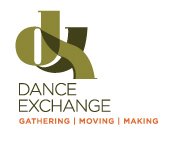 Dance Exchange breaks boundaries between stage and audience, theater and community, movement and language, tradition and the unexplored. Founded in 1976 by Liz Lerman and now under the artistic direction of Cassie Meador, Dance Exchange stretches the range of contemporary dance through explosive dancing, personal stories, humor, and a company of performers whose ages span six decades. The work consists of concerts, interactive performances, community residencies, and professional training in community-based dance. Dance Exchange employs a collaborative approach to dance making and administration. Recent and current projects include explorations of coal mining, genetic research, human rights, particle physics, ecology, land use, and rest in a hyper-driven society. For more information, visit danceexchange.org.  As I mentioned, I've been collaborating with Cassie Meador (Artistic Director and Choreographer), Ouida Maedel (Production Manager), Stowe Nelson (Sound Designer), Cheryl Patton Wu (Costume Designer) and Ben Levine (Lighting Designer) along with dancers Gabriela Fernandez-Coffey, Carli Mareneck, and Dance Exchange Resident Artists Shula Strassfeld and Matthew Cumbie to bring FROM THE DESK OF RACHEL CARSON to life. Working with these extraordinary, talented and dedicated artists has been such a rich, rewarding and stimulating experience. When Cassie and Ouida approached me about the collaboration, they told me that they had attended a performance THE HAMPTON YEARS at Theater J. They enjoyed the production and appreciated how I had incorporated history into the dramatic narrative. They weren't to know, until that meeting, that I had great respect for Rachel Carson and her work, and also a passion for dance dramaturgy. I knew right away that I wanted to work with Dance Exchange on this powerful and important new work. FROM THE DESK OF RACHEL CARSON was a devised piece from the beginning. We knew that we wanted to explore the life, legacy and impact of Rachel Carson's writing through movement, sound, and text. We also knew that we wanted this exploration to be deeply personal, immediate and urgent. Our journey brought together a fusion of artists from the worlds of dance, sound, lighting, writing, dramaturgy, and acting. Our time each day began with movement and conversation about the work and the day's intention. We then examined Rachel's writing and created our own. We build movement around the text and then reflected on what we wanted to keep and what we let fall away. We worked at a steady, determined and productive pace. I'm honored and delighted to share our work today, but I'm also quite sad to say good-bye to them. I've included everyone's bios and headshots along with a few more photos from our time together. Meet the Artists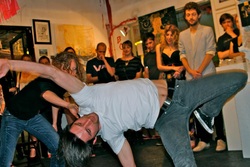 Matthew Cumbie is a professional dance artist and collaborator who hails from Houston, Texas, and came to dance in college. Now based in Washington, DC, he has been a company member with Keith Thompson/dancetactics performance group (2011-2012), and has performed with Mark Dendy, the Von Howard Project, Sarah Gamblin, Jordan Fuchs, jhon stronks, Paloma McGregor, and Jill Sigman/thinkdance. He began working with Dance Exchange in 2012. As a company member with Dance Exchange, he works in and out of doors in collaborative art-making and creative research to further develop our understanding of ourselves, our community, and the world around us. He has been on faculty at Texas Woman’s University and Queensborough Community College, and teaches at festivals and schools across the country. He holds an MFA in dance from Texas Woman’s University and is a Resident Artist and the Education Coordinator for Dance Exchange. 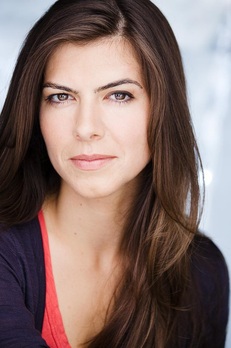 Gabriela Fernandez-Coffey is a DC based actress and mover, thrilled to be joining Dance Exchange on this project. Recent credits include Detroit, Gruesome Playground Injuries, and Stunning at Woolly Mammoth, where she is also a company member; The Motherfucker with the Hat at Studio Theatre; Divorciadas, evangelicas, y vegetarianas and Cita a ciegas at GALA Hispanic Theatre; The Lyons and How the Garcia Girls Lost Their Accents at Round House Theatre; and After the Fall at Theatre J, for which she won a Helen Hayes Award for Outstanding Supporting Actress. She is a graduate of NYU's Tisch School of the Arts. 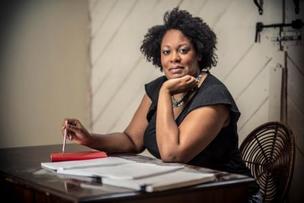 Jacqueline E. Lawton was named one of 30 of the nation's leading black playwrights by Arena Stage’s American Voices New Play Institute. Her plays include: Anna K; Blood-bound and Tongue-tied; Deep Belly Beautiful;The Devil’s Sweet Water; The Hampton Years; Ira Aldridge: the African Roscius; Lions of Industry, Mothers of Invention; Love Brothers Serenade (2013 semi-finalist for the Eugene O’Neill Theater Center’s National Playwrights Conference), Mad Breed, and Our Man Beverly Snow. Ms. Lawton received her MFA in Playwriting from the University of Texas at Austin, where she was a James A. Michener Fellow. She participated in the Kennedy Center’s Playwrights’ Intensive (2002) and World Interplay (2003). She is a 2012 TCG Young Leaders of Color award recipient and a National New Play Network (NNPN) Playwright Alumna. A member of Arena Stage's Playwright's Arena and the Dramatist Guild of America, Ms. Lawton currently resides in Washington, D.C.  Since 2007, Ben Levine has worked as the Technical Director/Theater Manager of Dance Place. Passionate about modern dance and experimental theater, Ben aims to combine his dance and theater training with his knowledge of theater technology to bring choreographic works to full realization. As Resident Lighting Designer at Dance Place, he has had the opportunity to design lights and stage-manage for many DC-based and touring dance companies including Wally Cardona, Ballet Folklórico Cutumba, Marc Bamuthi Joseph, Step Afrika, Rennie Harris Puremovement, City Dance Ensemble, Tiffany Mills Company, Lionel Popkin, Olive Dance Theatre, Universes, Nejla Yatkin/NY2Dance, Dana Tai Soon Burgess & Co, ClancyWorks, Farafina Kan, Next Reflex Dance Collective, Kim Gibilisco Dances, EDGEWORKS Dance Theater, and Rebollar Dance. Ben holds a degree in Theater Arts and Mathematics from Drew University.  Since 2011, Ouida Maedel has worked as the Partnerships and Production Manager at Dance Exchange, where her first major project was to produce Cassie Meador’s 500-mile walk and community engagement tour to a coal mine in West Virginia during How To Lose a Mountain‘s development phase. Passionate about the use of the performing arts for social change, Ouida has performed with a traveling theatre troupe in Zambia, and has worked in conflict transformation and public health in Ghana and in the U.S., activating theatre and creative movement for education and civil society engagement. Ouida has performed in, or stage managed a multitude of productions in DC and in New York, she holds a BA from Sarah Lawrence College, an MA in International Communication and Arts Management from American University, where she was a teaching and research fellow, and she currently serves as a Helen Hayes Award Judge. 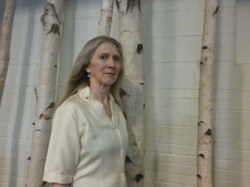 Carli Mareneck holds a BFA in Dance from the University of Utah. She has taught children and adults in Lewisburg, WV since 1982. As a founding member of the Trillium Performing Arts Collective she continues to broaden community involvement with modern dance through her teaching, choreography, and performance. Her work has been featured at James Madison University, Hollins University, Yes, Virginia Dance, Goose Route, FestivALL, on tour with the West Virginia Dance Company and in New York with Monica Bill Barnes at Context Theater and Dancespace. In addition to her work as a dance professional, Carli teachers workshops on Learning Through the Arts for public schools, conferences, and teacher trainings. 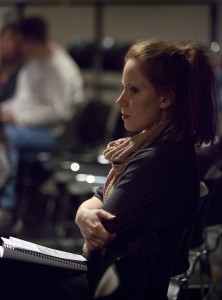 Cassie Meador is a choreographer, performer, educator and Artistic Director of the Dance Exchange. Her work is imbued with a passion for her surroundings, a belief in the human capacity for change, and a conviction that art can be a potent form of research and communication. In recent years, Cassie’s choreographic investigations have tackled numerous social and environmental issues through the synthesis of movement, sound, and striking visual images. She was recently selected as the sole artist representative to a research initiative of the International Human Dimensions Program on Global Environmental Change. She is an Associate Artist of the Center for Creative Research, and her writing has been commissioned by Dance Magazine and the National Association for Interpretation. Cassie received her B.F.A. in dance from The Ohio State University. She joined the performing company of the Dance Exchange in 2002 and assumed the role of Artistic Director in 2011. 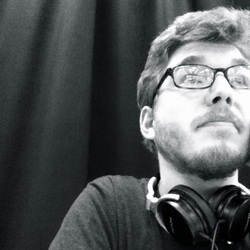 Stowe Nelson is a sound designer and engineer who specializes in new and devised work. Recent & upcoming designs include: Crimes of the Heart (Everyman); Take Me Home (Other Forces Festival); A Civil War Christmas (Center Stage); Buyer & Cellar (Barrow Street Theatre): How to Lose a Mountain (Dance Exchange); The Aliens (Studio Theatre); Cafe Variations (SITI Company). As a company member of The Mad Ones, he has designed The Tremendous Tremendous, the as-yet-untitledBiopic Project and Samuel & Alasdair: A Personal History of the Robot War for which he won the 2010 NYIT Award for Outstanding Sound Design and was nominated for a Drama Desk in 2012. 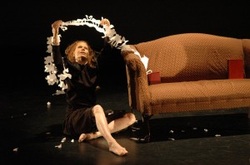 Shula Strassfeld began dancing “too late” and has been dancing ever since. After training in NY with members of the Jose Limon Company and Collete Barry and Susan Klein, Shula lived in the US, Israel and Canada. She has danced with choreographers Susan Rose, Joy Kellman, Flora Cushman, Mirali Sharon, Jan Van Dyke and Sandra Neels. Shula has an MA in Dance Education from Columbia University and has taught at Trinity College (Hartford CT), Rubin Academy of the Hebrew University, York University and at the professional schools of Canadian Ballet Theatre, Ballet Creole and the Kibbutz Dance Company. She joined Dance Exchange in 2007. 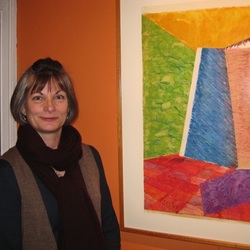 Cheryl Patton Wu freelances as a costume designer in the Washington Metro area. She was a founding artist, Costume Director, and Costume Designer at 1st Stage in Tysons Corner designing twenty productions in their first three seasons. Credits include Side Man, Three Bears, Parfumerie, Don’t Dress for Dinner, By the Bog of Cats, and The Game of Love and Chance. Additionally, The Last Five Years (Limelight Theatre); Sister Mary Ignatius Explains It All For You (The American Century Theatre); and The Rocky Horror Picture Show (Washington Savoyards), as well as Sweet Charity, The Drowsy Chaperone, Cabaret, La Voix Humaine, Suor Angelica, Trouble in Tahiti, and The Medium for The Catholic University of America. Cheryl is thrilled to be back working with the talented artists of Dance Exchange, where, she designed the world premier of How to Lose a Mountain and won the 2013 DC Dance Award for Best Overall Production. The Modern Moves Festival showcases twelve world-class contemporary dance companies that call DC home, each with different points of view. Experience the rich field of modern dance in the Greater DC Metropolitan area! Modern Moves Festival Sunday, January 5 at 4:00pm At the Atlas Performing Arts Center 1333 H St NE, Washington, DC 20002 Saturday, January 4 at 8pm: alight dance theater, Bowen McCauley Dance , Christopher K. Morgan & Artists, Dana Tai Soon Burgess & Company , Daniel Burkholder/The PlayGround , Human Landscape Dance Sunday, January 5 at 4pm: Company E, Dance Exchange, Jane Franklin Dance, Naoko Maeshiba/Kibism , Rebollar Dance, VTDance/Vincent E. Thomas For venue transportation and parking details, click here. For information about the entire festival, click here. Online sales are sold out, please call 202.399.7993 for more information. 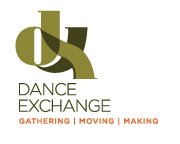 Dance Exchange is an intergenerational company of artists that creates dance and engages people in making art. We serve as an incubator for creative research, bringing ideas to action through collaborations that range from experts in the field of dance to unexpected movers and makers. Through these exchanges we stretch the boundaries between the studio, stage, and other environments to make dances that are rooted in the particularity of people and place. We recognize the body and movement as an essential resource to understand and investigate across disciplines. Through local, national, international, and online projects we gather and create community to contribute to a healthy and more sustainable environment. |
My BlogI'm a playwright, dramaturg, and teaching artist. It is here where you'll find my queries and musings on life, theater and the world. My posts advocate for diversity, inclusion, and equity in the American Theatre and updates on my own work. Please enjoy!
Categories
All
Archives
June 2020
Reading List
|
